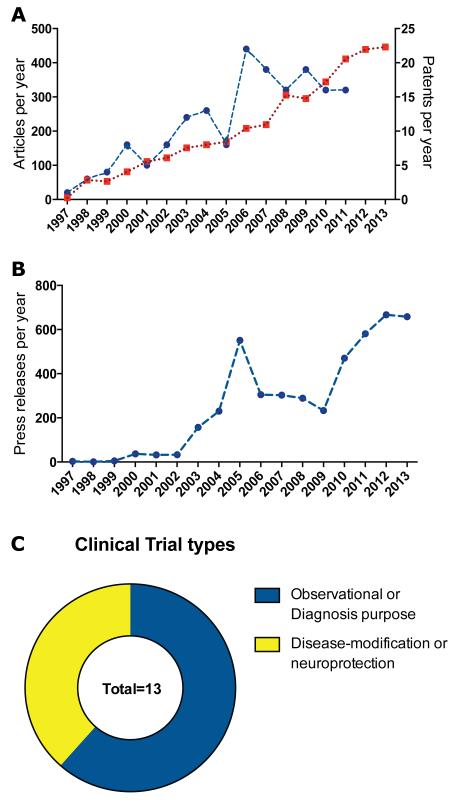Figure 4. Analysis of α-synuclein-related publications, patents and press releases per year.
(A) The emergence of the α-syn research field as measured by the number of scientific articles per year (in red) is accompanied by patents deposition (in blue). No gap between the two curves is observed. The patent (blue) line stops in 2011 since we used the priority date, which is closely equivalent to the deposition date (the patent will only become public 18 months after deposit). Literature search was conducted in PubMed, as well in Scopus® (Elsevier) and Web of Science® (Thomson Reuters) databases with MeSH terms and/or keywords in title, and abstract fields. Between 2127 and 5026 documents were retrieved on the subject depending on the database and the type of documents (article, review, notes, proceedings…) from 1997 to 2013. The patent analysis was run in the world wide collection of INPADOC family patents using Orbit® (Questel) patent research platform through a boolean search combining keywords in different topic field (title, abstract & claims) and International Patent sub-class Code (IPC) A61P-025/16 for antiparkinsonian drugs. All subsequent analyses were performed on patent family, i.e. a set of patent applications with the same priority date in different countries related to the same invention. Since 1997, and up to December 31th, 2013, we identified 176 patent families filed worldwide (in blue). (B) Press release in large media per year. The curve tendency fits with scientific publications and patent deposits. For the analysis, we used a collection of 3576 documents retrieved from Scopus for which we extracted citations count and compared to trends of press releases in large media by searching Factiva® (Dow Jones) database. Two peaks emerge, a first in 2005 with the post-genomic revolution and the interference RNA technology breakthrough, and a second one in 2010 with the support of the Michael J. Fox Foundation (MJFF) for candidate compounds and the launch of clinical trials (e.g. Affiris). (C) Of 1313 studies in the field of PD, only 13 open studies are associated with the “synuclein” keyword and 8 are actually biomarker studies. We divided clinical trials in two categories, observational or for diagnosis purpose (n=8) and disease modifying or neuroprotective strategies (n=5). Data were collected from the Food and Drug Administration’s clinical trials database (clinicaltrials.gov). Clinical trials, which were terminated, completed or of which the status was unknown were excluded. Abbreviations: NIH: national institute of health; α-syn: α-synuclein.

